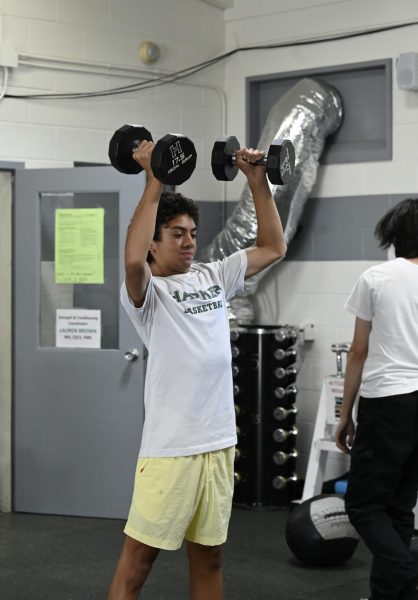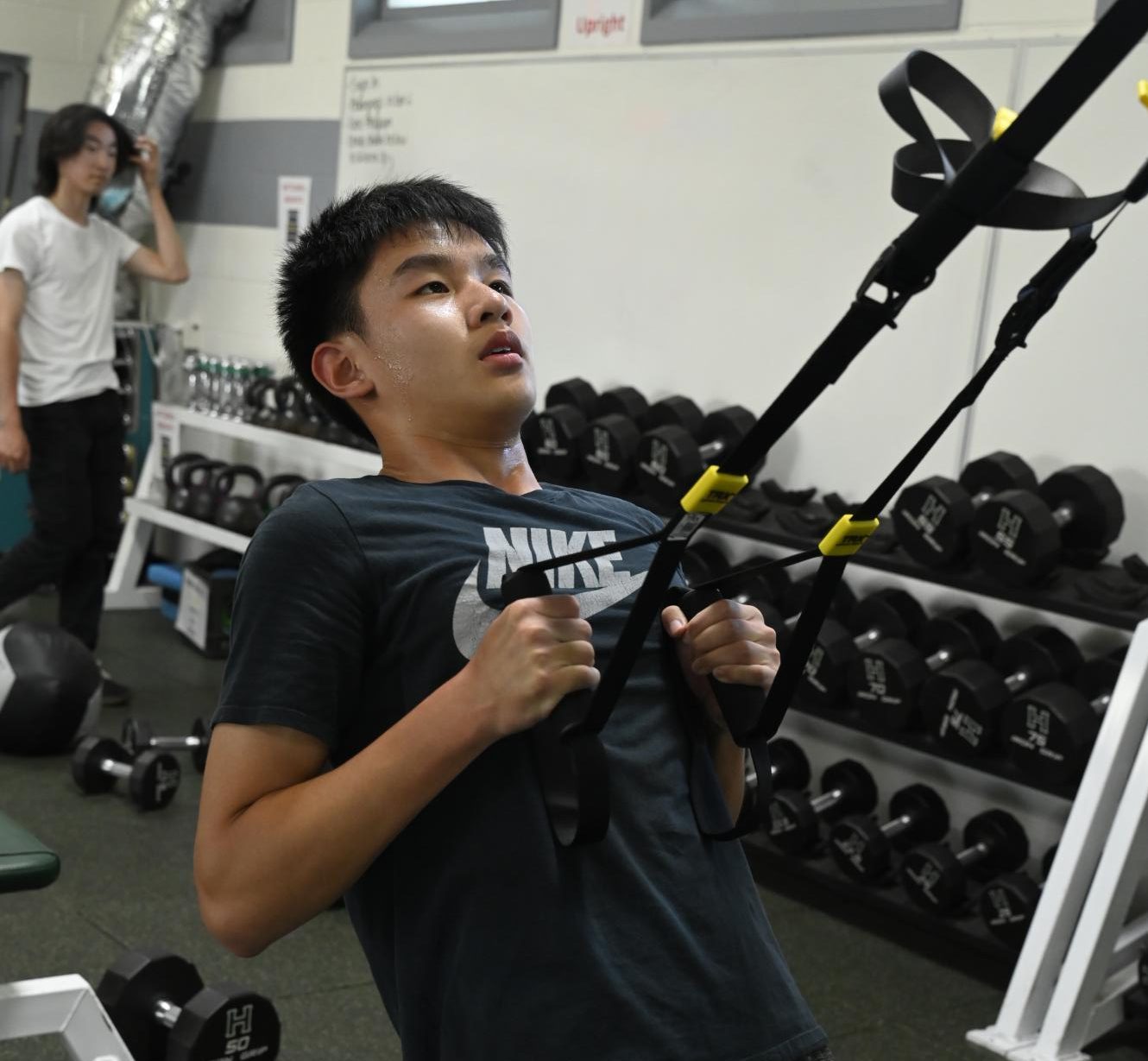In a fast-paced world filled with chaos, there exists a haven where people become the architects of their own bodies, shaping their physique with grit and determination. This is the realm of working out. It’s where sweat tells stories of success, where lifting weights means more than just building muscles. It’s about freeing the mind, away from worldly or personal issues.
The therapeutic aspect of working out has captivated the hearts of many high school students, like seniors Jason Li and Jason Yi, who have incorporated maintaining wellness into their daily routines. Strength and conditioning coordinator Lauren Brown explains that maintaining wellness involves two key components: fitness and nutrition.
For high school students, fitness generally comes in the form of weight lifting, cardio exercises and the classic squats, crunches and pushups. Brown also notes that some students also opt for short, curated workout routines on YouTube for their daily fix of physical activity. Nutrition involves eating fewer calories or consuming more nutrients.
The overwhelming variety of workout and diet options often leaves students wondering how to actually build muscle.
Diverse routines target specific fitness goals such as losing weight, maintaining shape and building muscle. Brown explains the process behind building muscle.
“What I usually do is high reps, so anything past 10 reps,” Brown said. “Let’s say you do four sets of 10 push-ups. That’s called hypertrophy, so that builds muscle mass and gives you a lot more muscle that you can physically see. You get what people call a pump, where their muscles actually look pretty big.”
After high reps, Brown recommends advancing to middle-range reps, which involve heavier weights for fewer reps. Jason Li frequents the gym and explains how he incorporates reps into his workout routine.
“If you wanna get as big as possible, all you have to do is train your muscle to failure again and again and again,” Jason L. said. “Then it’s recovery, eat a lot of protein, eat a lot of carbs and you will get strong and you will get jacked in no time.”
Brown also highlights how diet plays a tremendous role in building visible muscle, especially in bulking and cutting. Bulking’s primary aim is to gain muscle size and mass, and cutting’s main goal is to reduce body fat while maintaining muscle mass gained during the bulking phase. Although fitness coaches and websites generally promote bulking and cutting as the best way to gain muscle mass, Brown is skeptical of its effectiveness among high school students.
“In the high school setting, unless someone is following this super diligently with a written-out nutrition plan, bulking and cutting are really for bodybuilding,” Brown said. “It’s extreme calorie overindulgence and then cutting that near the end of a certain cycle or eight-week phase. But in terms of the high school athlete, I don’t think that would be most beneficial because bodies are still growing, changing and especially here, there’s so much academic stress.”

Instead, she recommends consuming balanced meals with adequate protein, healthy carbs like rice, vegetables and healthy fats. Harker students can take advantage of the salad bar and fruit bar provided at every lunch while avoiding the tempting cookies and desserts. Brown also emphasizes the importance of eating at every meal, as skipping meals often leaves students with little energy to function throughout the day.
Many students at Harker concentrate on building specific athletic qualities, such as strength or endurance, to boost performance in their sport. Jason L., who also swims competitively, stresses the importance of training at the gym away from the pool.
“Most of the time when we’re in season, my workouts will be less geared towards hypertrophy,” Jason L. said. “[We train] for athleticism which trains the fast twitch muscle fibers of your body as well as your muscle tolerance to lactic acid.”
Frequently working out generates numerous advantages, such as increased energy levels and better sleep, according to competitive powerlifter Jason Yi.
“It’s definitely a good stress reliever and good to channel your stress into something that’s tangible,” Jason Y. said. “It also gives you discipline because you always have to stick to your plan.”
Amidst all of these benefits, one stands out the most to Jason L.: tangible results. Seeing progress fuels motivation, and the more you see your muscles developing, the more motivated you become to keep pushing yourself. This creates a positive feedback loop where each bit of progress increases motivation, generating a continuous cycle of improvement.
“My favorite part about exercising is that you can see the results in the mirror, and you can feel the results as well,” Jason L. said. “I think at a certain point you get addicted to the progress that you’re seeing in front of your very eyes.”




